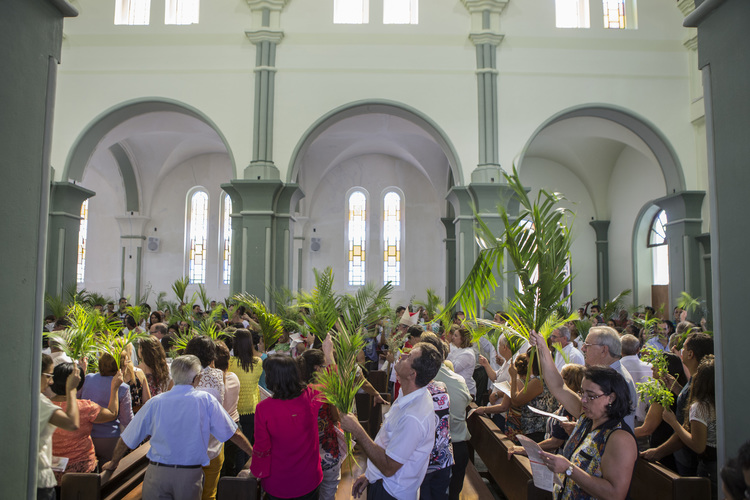
Do You Get a Black Moon?
What is a Black Moon, and why does it happen in December?
Palm Sunday commemorates Jesus Christ’s triumphal entry into Jerusalem, according to Christian belief.

Many people who attend a Palm Sunday church service receive palms.
©iStockphoto.com/sidneydealmeida
It marks the beginning of Holy Week and always falls on the Sunday before Easter Sunday. Other names for this day include Passion Sunday, Fig Sunday, Willow Sunday, Branch Sunday, or Blossom Sunday.
Many churches hold special Palm Sunday services that involve distributing palms to the congregation. Branches of olive, box elder, spruce or other trees are used in places where palms are not available. They are later hung up in houses for good luck, buried to preserve crops, or used to decorate graves. The custom of decorating graves with blessed palms still exists in some parts of Germany. Ashes from these palms are used for Ash Wednesday.
Processions take place in Spain, particularly in Seville, during Holy Week and start on Palm Sunday. These processions portray the Passion of Jesus Christ, which refers to Jesus’ suffering prior to his trial and execution. Piazzas in front of many churches throughout Italy are filled with people, including vendors selling olive and palm branches. Jesus’ entry into Jerusalem is often reenacted with a procession in Rome on Palm Sunday. The priests and deacons wear red garments and blessed palms are distributed during the church service.
Many churches in Greece celebrate Palm Sunday in a solemn manner. They call it kyriake, heorte ton baion, heorte baiophoros, or Lazarus Sunday, because they have the feast of Lazarus’ resurrection prior to Palm Sunday. Many Greek Orthodox churches celebrate Palm Sunday at a later date than the date that many western churches have for the day. This is because many Greek Orthodox churches still use the Julian calendar, which predates the Gregorian calendar used in many countries.
This observance falls on a Sunday, which is a non-school day and non-working day for many people in other countries, such as Australia, Canada, the United Kingdom and the United States. Palm Sunday processions may affect traffic and parking conditions in some towns and cities in countries such as Italy and Spain.
Palm Sunday is the start of Holy Week, which is the week before Easter, commemorating events in the last days of Jesus Christ’s life. According to Christian belief, Jesus rode into Jerusalem where people gave him a hero’s welcome during the Jewish Passover celebration. They heard about his miracles and regarded him as the leader who would deliver them from the Roman Empire’s domination. They carried palm branches, which is a traditional symbol of victory, and spread them throughout the streets before him.
Many western churches have observed palm blessings and distributions to the congregation on Palm Sunday since the middle ages. Early references to Palm Sunday observations, including a procession and blessing of palms, go as far back as the fourth and eighth centuries. Many modern Christian churches, including the Catholic and eastern churches, as well as the Lutheran, Methodist, and Presbyterian churches celebrate Palm Sunday as part of Holy Week.
The palm branch is traditionally a symbol of joy and victory. It is a sign of victory over the flesh and the world in Christianity. It is also associated in memory of Christian martyrs. Willow is commonly used instead of palm branches in some European countries. They are sometimes placed in the fields to ensure that there will be good crops.

What is a Black Moon, and why does it happen in December?

When will the next comet be visible?

Why do mornings keep getting darker after the December solstice?

How does the 12-hour clock system work? Is midnight 12 am or 12 pm?